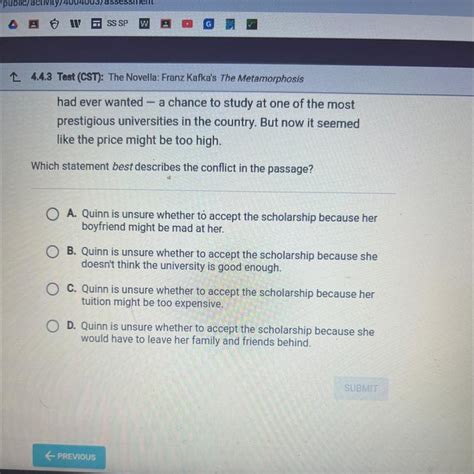Introduction
Every story has conflict, and external conflict is one of the most important elements of a plot. It drives the action forward, creates suspense, and keeps readers engaged. In this article, we will explore the various types of external conflict and provide examples of how they are used in literature.

Defining External Conflict
External conflict is a struggle between a character and an outside force. This force can be another character, a group of characters, nature, or even society itself. External conflict is often used to create tension and suspense in a story, as the character must overcome the obstacles that stand in their way.
Types of External Conflict
There are many different types of external conflict, but some of the most common include:
- Character vs. Character: This is a conflict between two or more characters. It can be physical, verbal, or emotional.
- Character vs. Nature: This is a conflict between a character and the forces of nature. It can be a natural disaster, a wild animal, or even the weather.
- Character vs. Society: This is a conflict between a character and the values and norms of society. It can be a conflict with family, friends, or even the government.
- Character vs. Fate: This is a conflict between a character and their destiny. It can be a prophecy, a curse, or simply the hand of fate.
Examples of External Conflict in Literature
External conflict is used in countless works of literature. Here are a few examples:
- In The Iliad, Achilles and Agamemnon clash in a conflict over honor and glory.
- In The Great Gatsby, Gatsby fights against the social barriers that keep him from Daisy.
- In To Kill a Mockingbird, Atticus Finch defends a black man accused of a crime he did not commit.
- In The Hunger Games, Katniss Everdeen fights against the Capitol in a battle for survival.
- In The Lord of the Rings, Frodo Baggins fights against the forces of evil to destroy the One Ring.
Importance of External Conflict
External conflict is essential to a good story. It creates tension, suspense, and keeps readers engaged. Without external conflict, a story would be boring and predictable.
Conclusion
External conflict is one of the most important elements of a plot. It drives the action forward, creates suspense, and keeps readers engaged. There are many different types of external conflict, and it is used in countless works of literature.
Table 1. Types of External Conflict
| Type of Conflict | Example |
|---|---|
| Character vs. Character | Achilles and Agamemnon in The Iliad |
| Character vs. Nature | Gatsby and Daisy in The Great Gatsby |
| Character vs. Society | Atticus Finch in To Kill a Mockingbird |
| Character vs. Fate | Katniss Everdeen in The Hunger Games |
| Character vs. Supernatural | Frodo Baggins in The Lord of the Rings |
Table 2. Common Mistakes to Avoid When Writing External Conflict
| Mistake | Description |
|---|---|
| Making the conflict too easy to resolve | The conflict should be challenging for the character to overcome. |
| Making the conflict too predictable | The reader should not be able to guess how the conflict will be resolved. |
| Making the conflict too unrealistic | The conflict should be believable and grounded in reality. |
| Making the conflict too melodramatic | The conflict should not be over-the-top or exaggerated. |
Table 3. Why External Conflict Matters
| Reason | Description |
|---|---|
| Creates tension and suspense | The conflict keeps the reader engaged and wondering what will happen next. |
| Drives the action forward | The conflict forces the character to take action and make decisions. |
| Reveals character | The conflict shows the character’s strengths and weaknesses. |
| Raises important questions | The conflict can explore important themes and issues. |
Table 4. Benefits of Using External Conflict
| Benefit | Description |
|---|---|
| Makes the story more interesting and engaging | The conflict keeps the reader invested in the story. |
| Helps the character develop | The conflict forces the character to grow and change. |
| Raises important questions | The conflict can explore important themes and issues. |
| Creates a sense of closure | The resolution of the conflict gives the reader a sense of satisfaction. |
